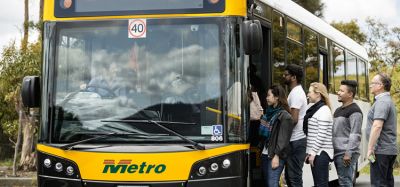Future mobility: making the city smart
- Like
- Digg
- Del
- Tumblr
- VKontakte
- Buffer
- Love This
- Odnoklassniki
- Meneame
- Blogger
- Amazon
- Yahoo Mail
- Gmail
- AOL
- Newsvine
- HackerNews
- Evernote
- MySpace
- Mail.ru
- Viadeo
- Line
- Comments
- Yummly
- SMS
- Viber
- Telegram
- Subscribe
- Skype
- Facebook Messenger
- Kakao
- LiveJournal
- Yammer
- Edgar
- Fintel
- Mix
- Instapaper
- Copy Link
Posted: 9 September 2016 | Juho Kostiainen & Elina Aittoniemi, Transport Researchers, VTT Technical Research Centre of Finland | No comments yet
A ‘smart city’ needs an efficient and sustainable transport system to support the needs of citizens. Easy and affordable access to living, working and leisure activities is important for efficient use of time and improving quality of life…


A ‘smart city’ needs an efficient and sustainable transport system to support the needs of citizens. Easy and affordable access to living, working and leisure activities is important for efficient use of time and improving quality of life.


Along with advanced vehicle systems and low- and zero-emission transport, making the most of digital technologies to improve the efficiency of the transport system is considered a major part in achieving sustainability.
The transport and mobility sector is going through a lot of changes. Being constantly connected enables real-time trip planning and ticketing as well as combining different transport solutions, such as on-demand services, to deliver seamless door-to-door trip chains. Applying ICT and exploiting the opportunities of Internet of Things (IoT) allows for context sensitive and personalised services to be offered anywhere. Cooperative systems and automation improve transport safety and efficiency as well as increase travel time productivity. Similarly, data from connected vehicles and digital infrastructure improves the situational picture and can be used in traffic management.
A key opportunity arising from digitalisation relates to multi-modality and interoperability across service providers and modes of transport. Public transportation is the cornerstone of moving large masses of people in urban areas. Easy-to-use information and ticketing services that combine public and private transportation services into door-to-door packages are an important step towards having a feasible alternative for a private car. While matching the convenience of a car or replacing its need completely may be unrealistic, availability of smart mobility services in urban areas can go a long way.
Traveller inclusion is another opportunity brought by digital technologies. Instead of being passive recipients of information, travellers can themselves collect data and play an active part in the transport network. By sending and receiving up-to-date information about the situation in the transport network, the trip can be completed more efficiently. Similarly, gamification can contribute to change towards more sustainable transportation habits and keeping the travellers motivated and active through incentives.
It is evident that the emerging digital technologies and services will influence future transport in cities, but little is yet known on their wider implications. Impacts can occur on a large-scale – ranging from individual savings in time or money to societal benefits in the form of improved health due to less pollution and wider use of walking and cycling. Evaluation and assessment of emerging alternatives and their impacts is of great importance to support decision-making and achieving highest impacts cost efficiently.
While automated driving can significantly cut operating costs of buses or Ubers by being driverless, it brings up questions like how people less proficient in the use of technology learn to use on-demand services or how mobility challenged persons who may require assistance can rely on robot cars. Thus the travellers, as users of these new services, play a central part in the changes of the transport sector. Users need to be both able and motivated to use the services – using needs to be easy, benefits should be apparent for the traveller and concerns such as privacy issues must be addressed. Without user acceptance no service will be used. It is therefore crucial to take into account the needs, abilities and opinions of different travellers and win their trust. In addition, people are not always rational in their behaviour. Old habits sometimes die hard (“I want to drive myself, not sit in a robot car!”).
Whatever the future transport system and mobility options in urban areas may look like, making the right choices with urban planning and transport system design is central for ensuring accessibility, sustainability and livability – making the city smart.
About the Authors
Juho Kostiainen and Elina Aittoniemi are Transport Researchers at VTT Technical Research Centre of Finland on topics such as new mobility concepts, service co-development, evaluation and impact assessment.
Related topics
Intelligent Transport Systems (ITS), Multimodality, Ticketing & Payments








